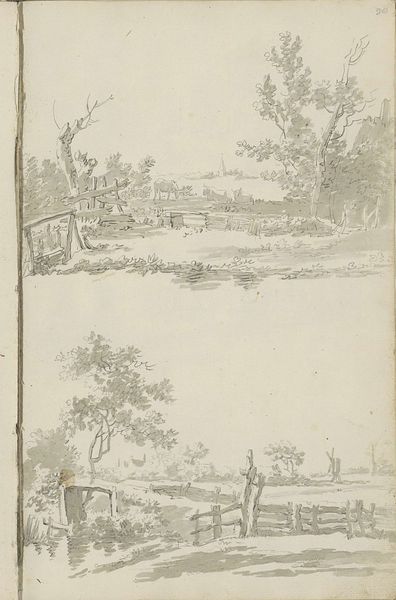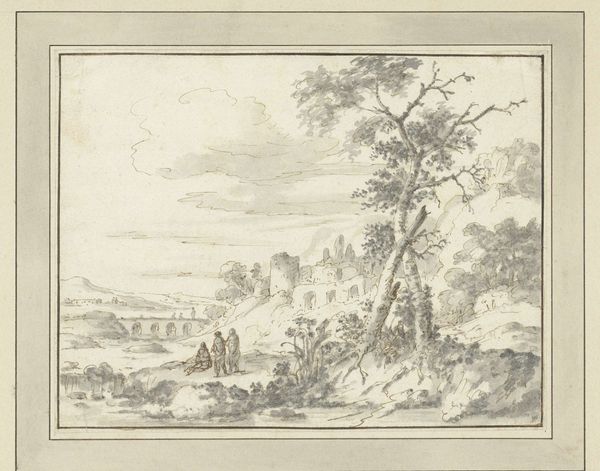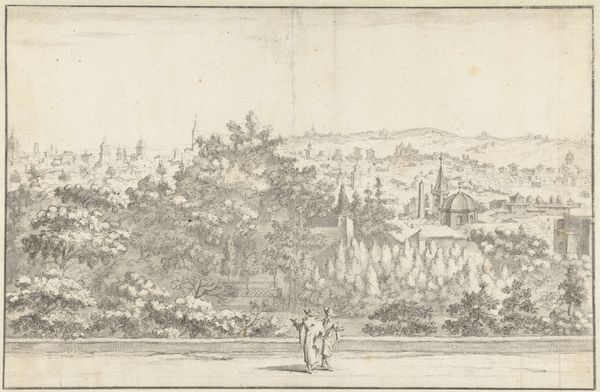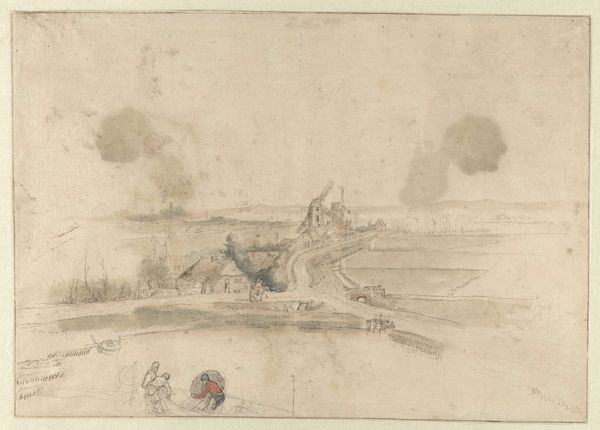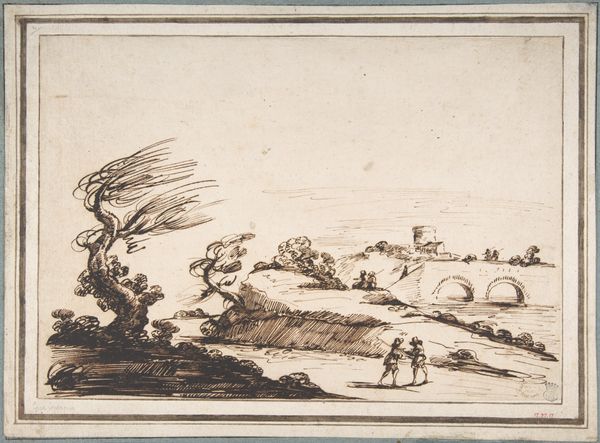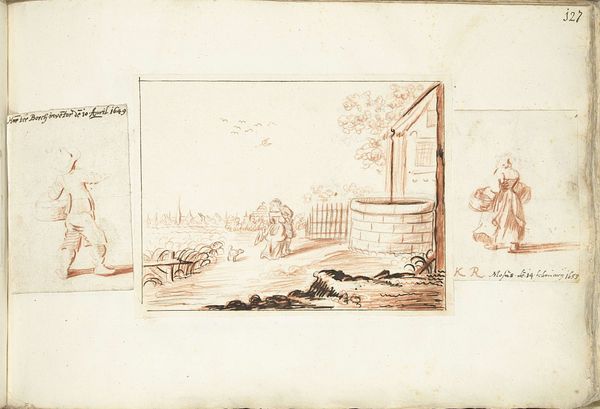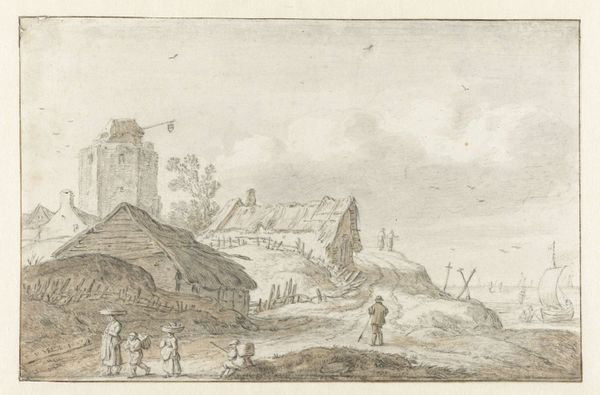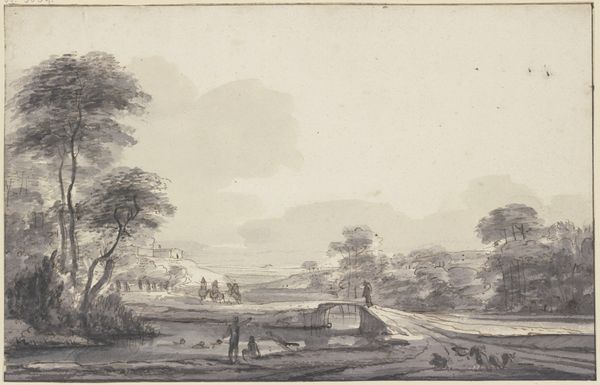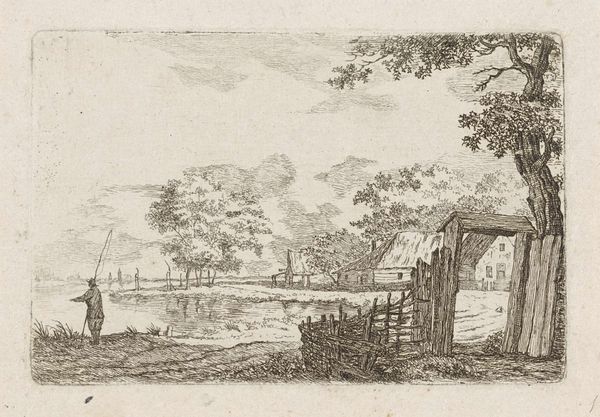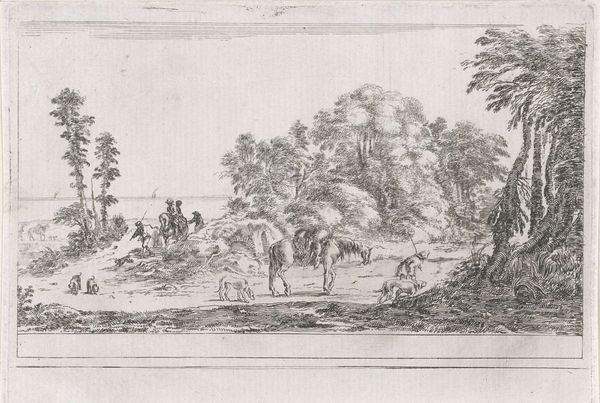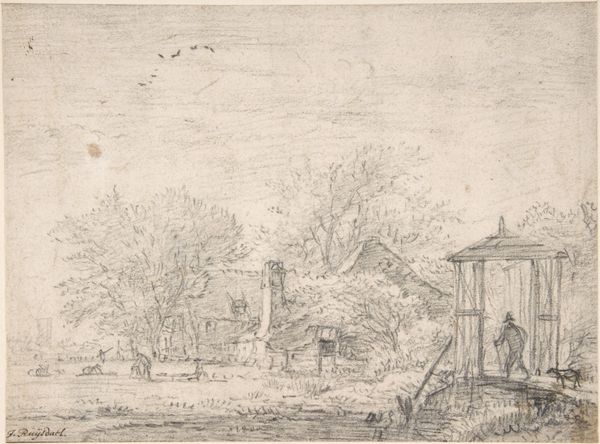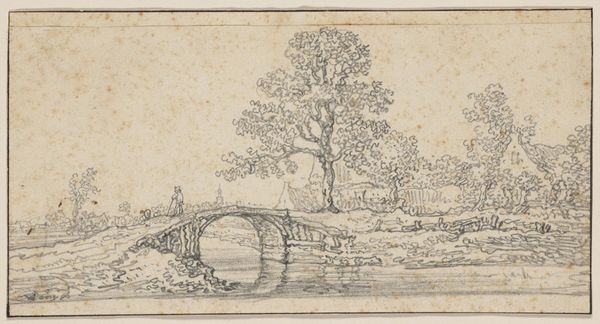
drawing, pencil
#
drawing
#
dutch-golden-age
#
landscape
#
pencil
#
genre-painting
Dimensions: height 83 mm, width 156 mm
Copyright: Rijks Museum: Open Domain
Editor: So this drawing, "Landschap bij Schagen" by Jacob Colijn, is from the 17th century and done in pencil. It's quite small, and I'm struck by its simplicity, a seemingly ordinary scene made beautiful. What catches your eye in this piece? Curator: Considering its place in history, particularly within the Dutch Golden Age, this drawing reflects a specific societal interest. Landscapes at this time became symbols of national pride and even nascent capitalist aspirations. Do you notice how this “ordinary scene” carefully emphasizes elements like land use, passage via the bridge, even dwelling in the background? Editor: I see what you mean. The figures on horseback almost seem like they’re inspecting their property, or maybe travelling to market? So the landscape isn't just pretty, but has a deeper social meaning. Curator: Precisely. Colijn's landscape contributes to a larger visual rhetoric prevalent at the time. Images such as these reinforced societal values regarding land ownership, trade and national identity. It almost turns what we initially thought was simple beauty into a potent representation of social and economic structures. Does seeing it this way change how you view it now? Editor: Definitely. I thought it was just a nice drawing, but now I see it as a snapshot of 17th century Dutch society and its values. Curator: And the role of the artist? It forces us to consider the role of artistic practice within societal discourse. Editor: It’s like the artist wasn't just recording reality, but also shaping the perception of it! Thanks, that was insightful. Curator: My pleasure. Seeing art in the context of its time always enriches the experience.
Comments
No comments
Be the first to comment and join the conversation on the ultimate creative platform.
